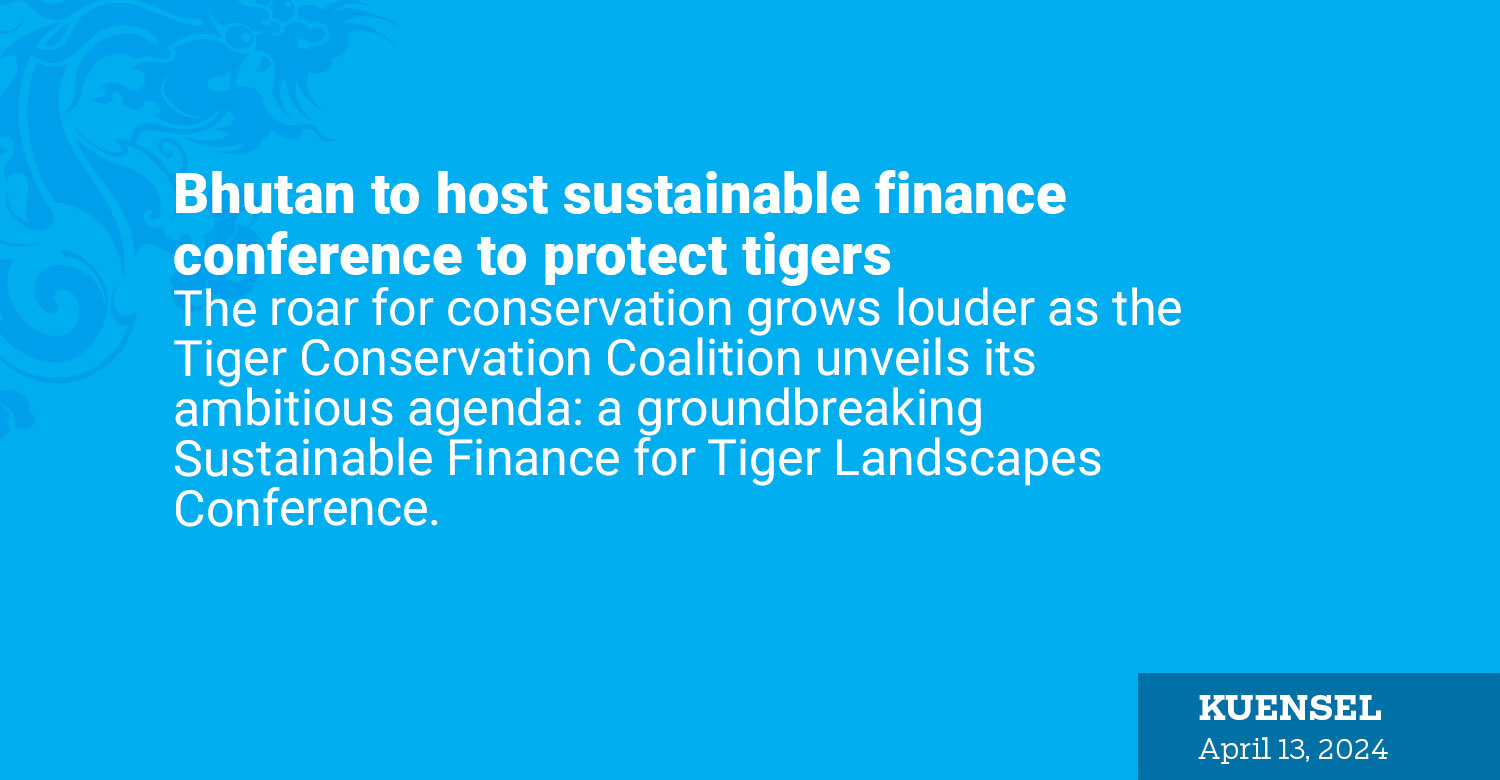Sherab Lhamo
The roar for conservation grows louder as the Tiger Conservation Coalition unveils its ambitious agenda: a groundbreaking Sustainable Finance for Tiger Landscapes Conference.
With a goal of raising USD 1 billion, this initiative seeks to not only bolster tiger conservation efforts but also foster community resilience, enabling harmonious coexistence with these majestic predators.
The conference will be held in Bhutan between April 22 and 23.
Bhutan’s tiger population has shown promising growth, with an estimated 131 tigers recorded in 2023, marking a significant 27 percent increase from the count in 2015.
This trend is highlighted in the National Tiger Survey Report of 2023.
The annual growth of tiger population has been 5 percent.
Lobzang Dorji, Director, Department of Forests and Park Services, Ministry of Energy and Natural Resources, said that while this is encouraging for conservation efforts, there is need for adequate funding to mitigate human-tiger conflict that is growing in communities living in the tiger landscape.
Lobzang Dorji, said that impact of conservation efforts were successful.
Trongsa has experienced the highest number of human-wildlife conflicts, with a total of 580 cases reported between 2020 and 2024. Within Trongsa, Nubi Gewog accounted for 360 of these cases, indicating a significant number of human wildlife conflict in that area.
According to a survey conducted between July 2019 and 2021, tigers were responsible for the deaths of 560 livestock animals. In response to these losses, some people have resorted to illegally harming and killing these animals as a means of retaliation or protection of their livestock.
Over the past decade, the Department of Forests and Park Services, confiscated more than 22 tiger skins.
This indicates ongoing efforts to combat illegal wildlife trade and protect endangered species like tigers.
Lobzang Dorji, emphasized the importance of managing biological corridors to tackle human-wildlife conflict effectively.
These corridors play a crucial role in facilitating tiger movement between areas, and while progress has been observed, sustained efforts are required.
Lobzang Dorji also stressed the need for continuous annual monitoring of tiger populations, rather than the current practice of every five years, to ensure more effective conservation measures.
He emphasised Bhutan’s focus on sustainable financing, which involves exploring innovative methods like carbon credits, environmental services, and user fees within parks and conservation areas.
These approaches are aimed to generate funds while supporting conservation efforts for long-term wildlife protection.
The Global Tiger Forum 2023 reported that there are currently 5,574 tigers remaining in the wild, up from 3,890 in 2016. However, the World Wildlife Fund stresses that much more work is required to safeguard the future of this species in its natural habitat.
In 2022, the government took a significant step by establishing six gewog tiger conservation tshogpas in Trongsa.
These are community-led tiger conservation groups are aimed at fostering stewardship of tigers, addressing human-tiger conflicts, and offering livestock insurance.
To combat tiger poaching, authorities implemented smart patrolling strategies and raised fines from Nu 50,000 to Nu 100,000.
Tigers primarily inhabit the Royal Manas Park, Jigme Singye Wangchuck National Park, Phibsoo Wildlife Sanctuary, Jigme Dorji Wangchuck National Park, as well as forests in Bumthang, Dagana, and Zhemgang.


